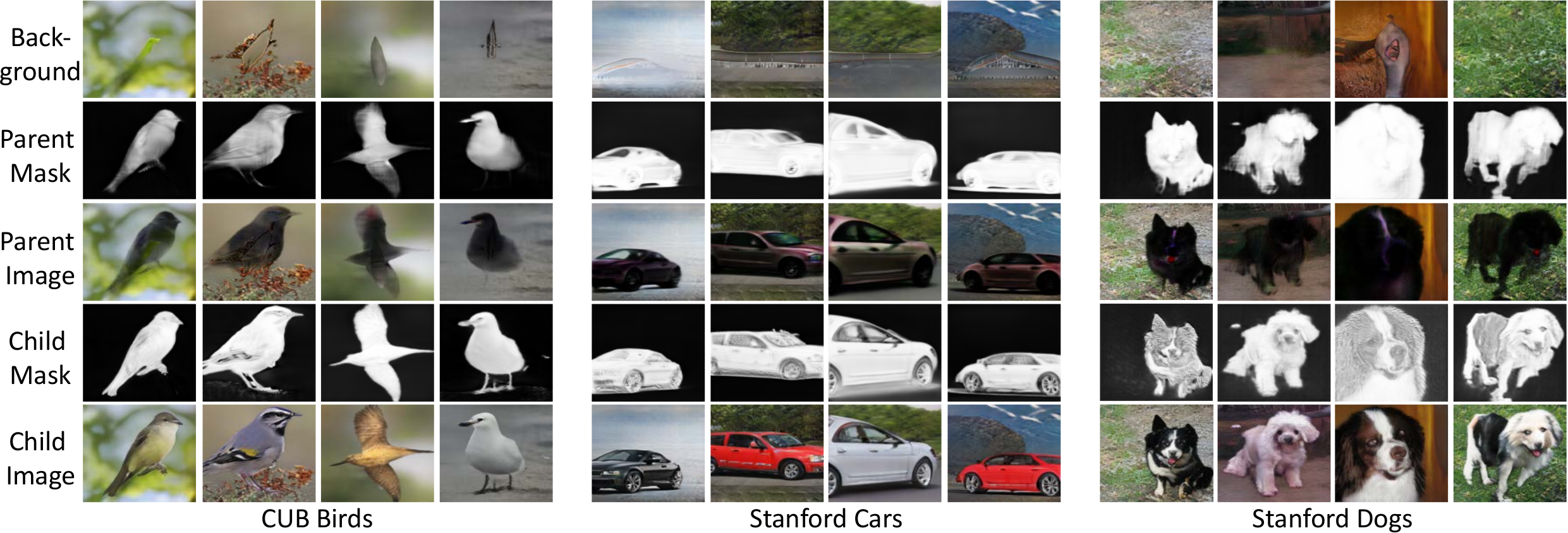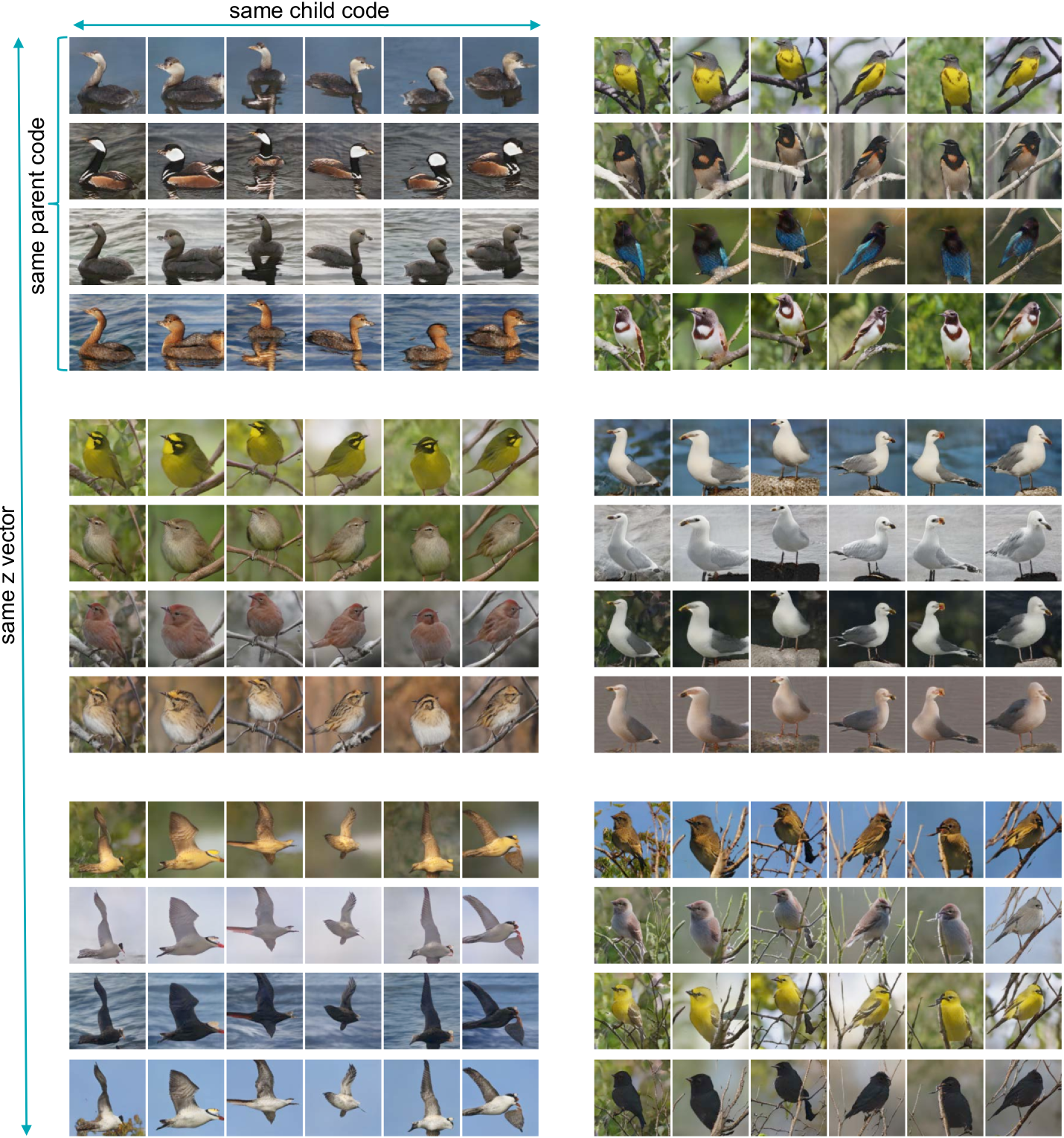kkanshul / Finegan
Programming Languages
Labels
Projects that are alternatives of or similar to Finegan
FineGAN
Pytorch implementation for learning to synthesize images in a hierarchical, stagewise manner by disentangling background, object shape and object appearance.

FineGAN: Unsupervised Hierarchical Disentanglement for Fine-grained Object Generation and Discovery
Krishna Kumar Singh*, Utkarsh Ojha*, Yong Jae Lee
project |
arxiv | demo video | talk video
CVPR 2019 (Oral Presentation)
Architecture

Requirements
- Linux
- Python 2.7
- Pytorch 0.4.1
- TensorboardX 1.2
- NVIDIA GPU + CUDA CuDNN
Getting started
Clone the repository
git clone https://github.com/kkanshul/finegan
cd finegan
Setting up the data
Note: You only need to download the data if you wish to train your own model.
Download the formatted CUB data from this link and extract it inside the data directory
cd data
unzip birds.zip
cd ..
Downloading pretrained models
Pretrained generator models for CUB, Stanford Dogs are available at this link. Download and extract them in the models directory.
cd models
unzip netG.zip
cd ../code/
Evaluating the model
In cfg/eval.yml:
- Specify the model path in
TRAIN.NET_G. - Specify the output directory to save the generated images in
SAVE_DIR. - Specify the number of super and fine-grained categories in
SUPER_CATEGORIESandFINE_GRAINED_CATEGORIESaccording to our paper. - Specify the option for using 'tied' latent codes in
TIED_CODES:- if
True, specify the child code inTEST_CHILD_CLASS. The background and parent codes are derived through the child code in this case. - if
False, i.e. no relationship between parent, child or background code, specify each of them inTEST_PARENT_CLASS,TEST_CHILD_CLASSandTEST_BACKGROUND_CLASSrespectively.
- if
- Run
python main.py --cfg cfg/eval.yml --gpu 0
Training your own model
In cfg/train.yml:
- Specify the dataset location in
DATA_DIR.- NOTE: If you wish to train this on your own (different) dataset, please make sure it is formatted in a way similar to the CUB dataset that we've provided.
- Specify the number of super and fine-grained categories that you wish for FineGAN to discover, in
SUPER_CATEGORIESandFINE_GRAINED_CATEGORIES. - Specify the training hyperparameters in
TRAIN. - Run
python main.py --cfg cfg/train.yml --gpu 0
Sample generation results of FineGAN
1. Stage wise image generation results

2. Grouping among the generated images (child).

Citation
If you find this code useful in your research, consider citing our work:
@inproceedings{singh-cvpr2019,
title = {FineGAN: Unsupervised Hierarchical Disentanglement for Fine-Grained Object Generation and Discovery},
author = {Krishna Kumar Singh and Utkarsh Ojha and Yong Jae Lee},
booktitle = {CVPR},
year = {2019}
}
Acknowledgement
We thank the authors of StackGAN++: Realistic Image Synthesis with Stacked Generative Adversarial Networks for releasing their source code.
Contact
For any questions regarding our paper or code, contact Krishna Kumar Singh and Utkarsh Ojha.
